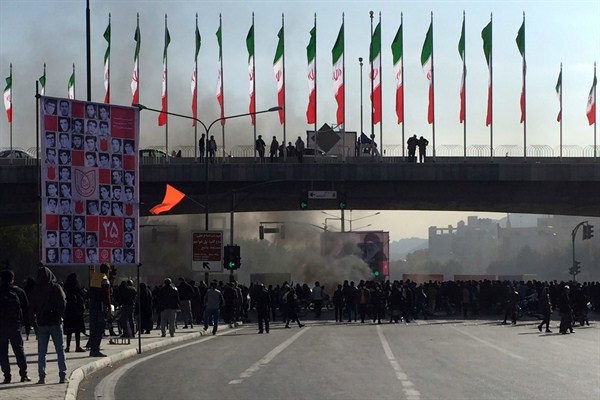At midnight on Nov. 15, Iran’s government announced a precipitous 300 percent hike in fuel prices. Immediate public outcries quickly escalated into nationwide protests that spread to more than 100 cities and gripped the country for 6 straight days, before the authorities effectively crushed them.
Since President Donald Trump withdrew the United States from the Iran nuclear deal in August 2018 and reimposed unilateral sanctions, the Iranian economy has been charting difficult waters. President Hassan Rouhani admitted as much recently when he exhorted lawmakers to reduce fuel subsidies in the face of plummeting oil revenues, saying that “Iran is experiencing one of its hardest years since the 1979 Islamic Revolution.”
While Iranian government officials and some observers abroad have been quick to cast the blame for this month’s protests on American sanctions, the causes are deeper and more structural. The fuel hike only set them off. Consider the popular chants of protesters, which targeted Supreme Leader Ayatollah Ali Khamenei—with “Death to the dictator!”—and Iran’s wider ruling elite, rather than the United States. While Trump’s “maximum pressure” campaign is certainly exacerbating economic strains, Iran has seen sporadic unrest and protests for several years now by workers, teachers and poorer segments of society—the very people that the Islamic Republic had vowed to represent when it first came to power.

